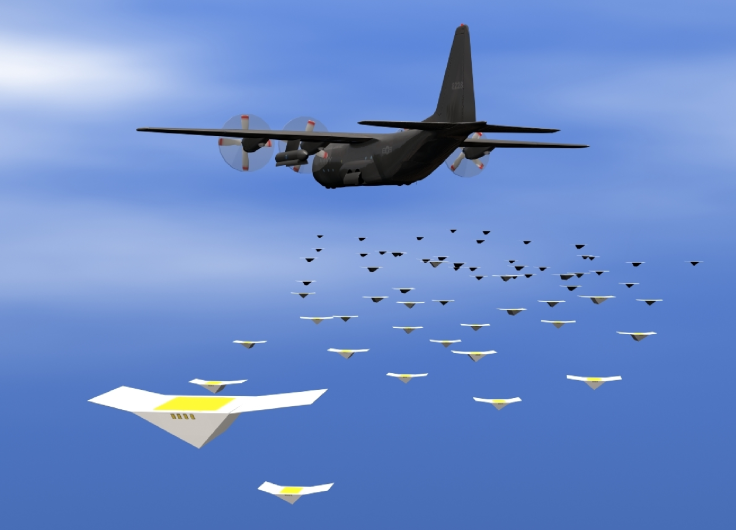Watch: NASA Tests 100 US Navy Cicada Drones That Could Spy In Hostile Territory

NASA recently tested a swarm of tiny drones by dropping them over the Beaver Dam Airpark in Virginia. NASA's Langley Research Center released a video that shows four large Hive UAVs dropping over 100 Cicada drones, each of which is small enough to fit on a human palm.
Cicada, which stands for Close-in Cover Autonomous Disposable Aircraft, has been developed by the US Naval Research Laboratory. According to the Navy, the Cicada drones are low-cost and are enabled with GPS. They are not only autonomous and disposable but can also be deployed en masse to "seed" a targeted area with multiple payloads.
"These payloads could be interconnected to form an ad-hoc, self-configuring network. Communication nodes, sensors, or effectors can then be placed in a programmable geometric pattern in hostile territory without directly over-flying those regions or exposing human agents on the ground," the US Navy said in a statement.
NASA is reportedly looking into how these Cicada drones could be helpful to meteorologists, as they contain temperature, wind speed, and air pressure sensors. The sensors on these tiny drones could provide data about shifting weather patterns, storm systems and more.
However, according to a report by CNet, the US military has a different use for the Cicada drones. The UAVs' size and their disposable nature could make them a highly significant tool in surveillance operations. The military is reportedly looking into how these drones could be deployed over hostile territory to identify human targets.
NASA has deemed its test successful.
© Copyright IBTimes 2025. All rights reserved.





















